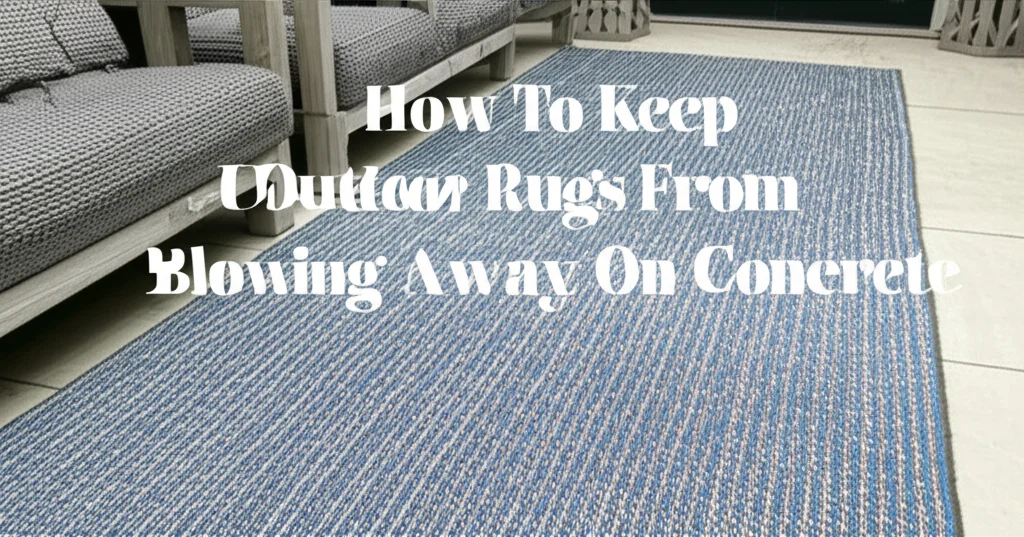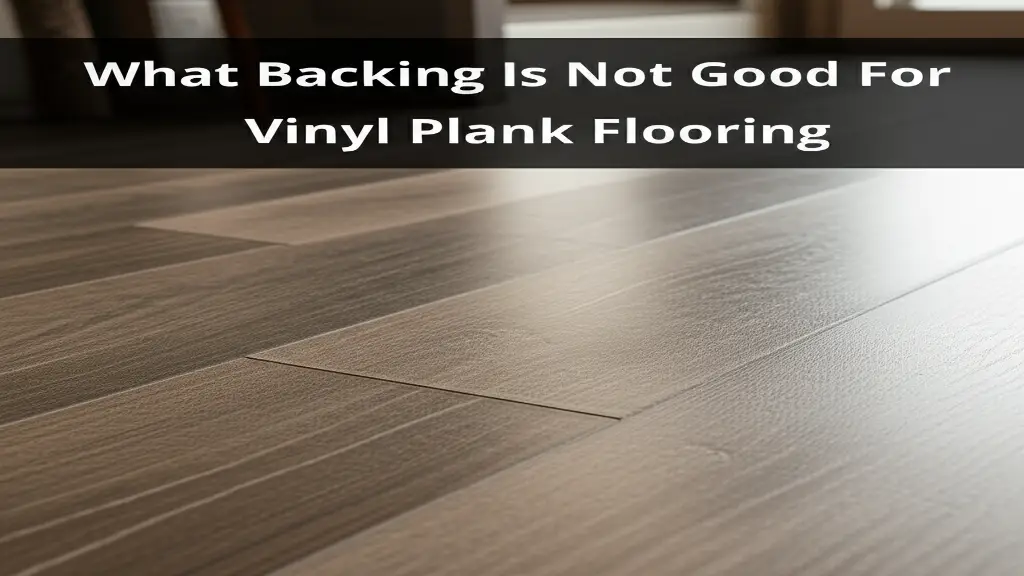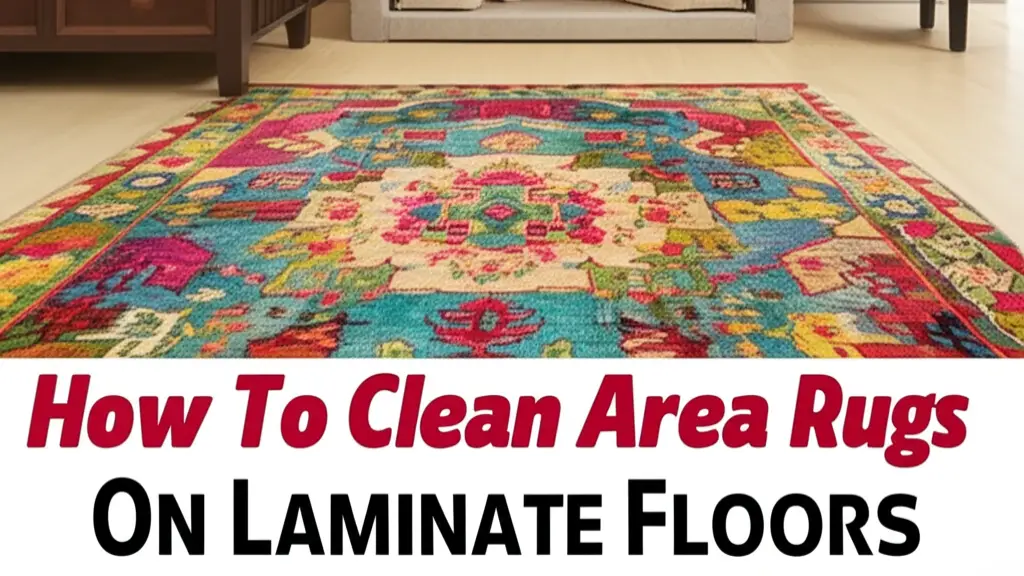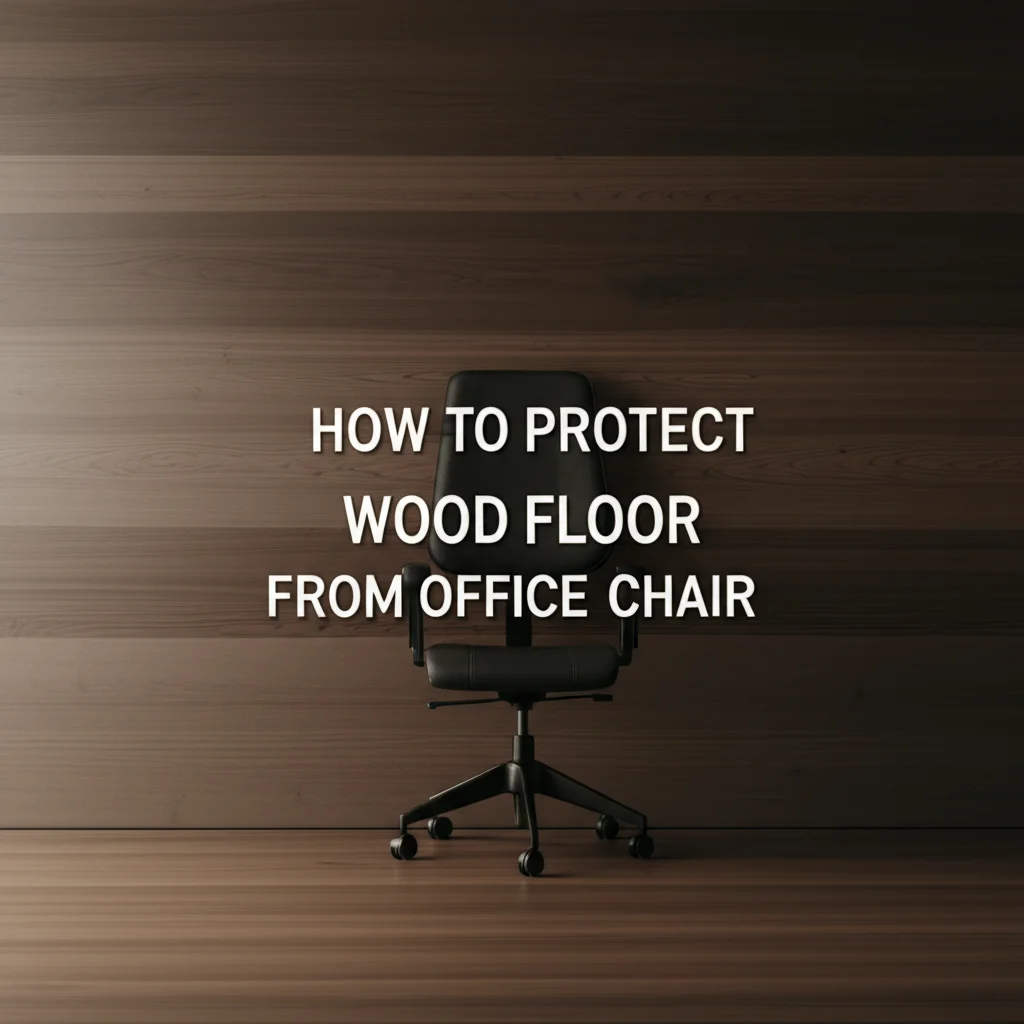· Todd Martin · Floor Cleaning · 13 min read
How To Protect Wood Floors With Area Rugs
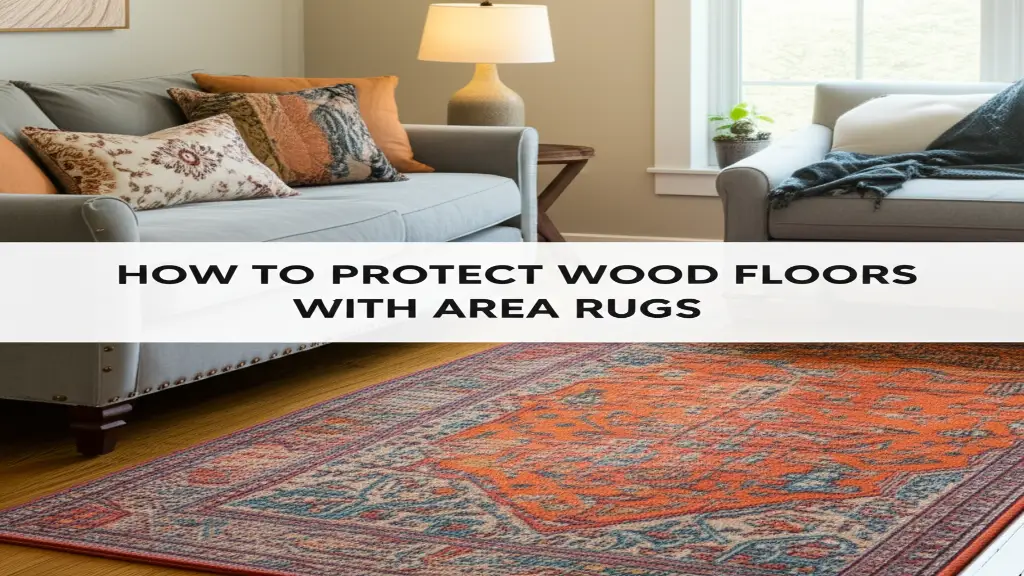
How To Protect Wood Floors With Area Rugs: The Complete Guide
Wood floors add timeless beauty and value to any home, but they also require proper care to maintain their appearance and longevity. One of the most effective ways to protect your hardwood investment is with strategically placed area rugs.
Not only do rugs add style and comfort to your living spaces, but they also serve as a protective barrier against daily wear and tear.
In this comprehensive guide, we’ll explore everything you need to know about how to protect wood floors with area rugs, from selecting the right rug pads to placement techniques that prevent damage while enhancing your home’s aesthetic appeal.
Key Takeaways
- Use proper rug pads designed specifically for hardwood floors
- Choose natural materials that won’t damage wood finishes
- Implement routine maintenance for both rugs and floors
- Position rugs strategically in high-traffic areas
- Learn DIY methods to prevent slipping and scratching
Here’s how to effectively protect your wood floors with area rugs: Select rugs with natural fibers and always use quality rug pads designed specifically for hardwood surfaces. Place rugs in high-traffic areas, rotate them regularly, and maintain proper cleaning routines for both rugs and floors.
Why You Should Use Area Rugs on Hardwood Floors
Hardwood floors are a significant investment that can last for generations when properly maintained. Using area rugs isn’t just about aesthetics—it’s a practical approach to preserving your floors’ condition and extending their lifespan.
Benefits of Using Area Rugs on Wood Floors
Area rugs provide multiple layers of protection for your hardwood floors. First, they shield the wood surface from foot traffic, which is especially important in high-traffic areas like entryways, hallways, and living rooms. Over time, foot traffic can wear down the finish on hardwood floors, leading to dullness and potential damage to the wood itself.
Rugs also protect against scratches from furniture movement. Even with felt pads on furniture legs, shifting chairs, tables, or sofas can leave unsightly scratches on hardwood. Area rugs create a protective buffer between furniture and flooring.
Furthermore, area rugs help protect wood floors from UV damage. Direct sunlight can cause wood floors to fade and discolor over time. Strategically placed rugs can cover portions of the floor that receive the most sunlight, helping to maintain a more uniform appearance throughout your space.
Moisture is another enemy of hardwood floors, and area rugs can help here too. In areas prone to spills, like dining rooms or kitchens, rugs can catch drips before they reach the wood. Just be sure to clean up spills promptly to prevent moisture from seeping through to the hardwood beneath.
Finally, area rugs add comfort and warmth, especially during colder months. Wood floors, while beautiful, can feel cold underfoot. Rugs provide insulation and a soft surface for bare feet, making your space more comfortable year-round.
Choosing the Right Rug Pads for Hardwood Floors
The right rug pad is perhaps the most crucial element in protecting wood floors with area rugs. While the rug itself provides the first layer of protection, what sits between your rug and floor can make the difference between protection and damage.
Best Rug Pad Materials for Hardwood Floors
When selecting rug pads for hardwood floors, material is paramount. Natural rubber rug pads are widely considered the best option. Unlike synthetic materials that can react with and damage floor finishes, natural rubber provides excellent grip without leaving residue or causing discoloration.
Felt rug pads are another excellent choice for hardwood protection. These dense pads provide substantial cushioning and insulation while protecting the wood surface from abrasion. Many experts recommend combination pads that feature natural rubber on the bottom for grip and felt on top for cushioning.
Materials to avoid include PVC and adhesive-backed pads. PVC can trap moisture and potentially cause discoloration of both the floor finish and the wood itself. Adhesive-backed products might seem convenient but can leave sticky residue that damages floor finishes and is difficult to remove.
Thickness Considerations for Rug Pads
The ideal rug pad thickness depends on the rug’s location and purpose. For high-traffic areas, a thinner pad (around 1/8 inch) provides necessary grip without creating a tripping hazard. For areas where comfort is a priority, such as living rooms or bedrooms, thicker pads (1/4 to 3/8 inch) offer additional cushioning.
However, be cautious with extremely thick pads. Too much cushioning can actually lead to excessive movement when walking on the rug, potentially causing the edges to curl or the rug to shift—both of which can damage hardwood floors over time.
DIY Methods to Keep Rugs from Sliding on Wood Floors
One of the most common challenges with area rugs on hardwood floors is keeping them in place. Slipping rugs not only look untidy but also pose a safety hazard and can damage your floors through constant movement.
Non-Slip DIY Solutions
If you’re wondering how to stop a rug from moving on a wood floor without purchasing commercial products, several DIY methods can help:
Silicone caulk grid: Apply small dots of clear silicone caulk in a grid pattern on the underside of your rug. Once dry, this creates a non-slip surface that won’t damage your hardwood floors. Ensure the caulk is completely dry before placing the rug on your floor.
Shelf liner: Non-adhesive shelf liner cut to the size of your rug can serve as an effective and inexpensive rug pad. Look for options labeled safe for wood surfaces.
Carpet tape: Double-sided carpet tape designed specifically for hardwood floors can secure rug edges without damaging the finish. Apply tape only to the rug’s perimeter and ensure it’s labeled as safe for wood floors.
Rug anchors: For corners that persistently curl up, rug anchors or corner weights can help keep edges flat. These small weights are designed to be discreet while keeping your rug firmly in place.
Furniture placement: Strategically placing furniture partially on rugs can help anchor them in place naturally. This works particularly well for larger area rugs in living rooms where sofas and tables can help keep the rug stationary.
Remember that while these DIY solutions can be effective, they should never involve adhesives or materials that could potentially damage your hardwood finish. When in doubt, opt for commercial products specifically designed for use on hardwood floors.
Strategic Rug Placement to Maximize Floor Protection
Where you place your rugs can significantly impact how well they protect your hardwood floors. Strategic placement not only enhances your home’s aesthetic but also provides targeted protection where it’s needed most.
High-Traffic Areas That Need Protection
The most critical areas for rug placement are those with the highest foot traffic. Entryways should always feature a rug to catch dirt, debris, and moisture before they can be tracked throughout your home. Hallways, which serve as thoroughfares between rooms, benefit greatly from runner rugs that protect the center of the walkway.
Living rooms, especially paths between furniture pieces, experience consistent traffic and benefit from area rug protection. Dining areas need rugs large enough to accommodate chairs even when pulled out, protecting the floor from chair legs scraping during movement.
In kitchens, consider placing smaller rugs in front of the sink and food preparation areas. These spots not only see high traffic but are also prone to dropped utensils and water splashes that can damage wood floors.
Proper Rug Sizing and Placement Tips
The size and placement of your area rugs can make a significant difference in both protection and appearance:
In living rooms, choose a rug large enough that at least the front legs of all furniture pieces rest on it. For maximum protection, all furniture legs should remain on the rug.
Dining room rugs should extend at least 24 inches beyond the table edge on all sides, allowing chairs to remain on the rug even when pulled out.
Bedroom rugs look best extending 18-24 inches beyond the sides and foot of the bed, creating a soft landing for feet in the morning.
Leave a consistent border of hardwood visible around rugs—usually 12-18 inches from the wall in larger rooms and 8 inches in smaller spaces.
For open floor plans, use multiple rugs to define different functional areas while protecting the most heavily used portions of the floor.
Remember that bare wood between rugs in adjoining spaces creates a more elegant look than wall-to-wall coverage, which can appear dated. These intentional expanses of visible hardwood also allow your beautiful floors to remain a featured element of your home’s design.
Maintenance Tips for Rugs and Wood Floors
Proper maintenance of both your rugs and wood floors is essential to maximize protection and longevity. A consistent care routine prevents damage and keeps your floors looking their best.
Regular Cleaning Procedures
For optimal protection, establish these cleaning habits:
Vacuum rugs regularly using a suction-only setting or a vacuum designed for area rugs. Beater bars can damage both rugs and potentially the floor beneath if the rug is thin.
Shake out smaller rugs outdoors regularly to remove dust and debris that can work their way through to scratch floor surfaces.
Rotate rugs 180 degrees every 6-12 months to ensure even wear and prevent uneven fading, particularly in areas with direct sunlight.
Clean spills immediately to prevent liquid from seeping through to the wood floor below. Blot—don’t rub—spills to prevent pushing moisture deeper into the rug fibers.
Professional cleaning for area rugs every 1-2 years maintains their appearance and removes deeply embedded particles that could potentially scratch floors.
How to Clean an Area Rug on a Wood Floor
Cleaning area rugs while protecting the wood beneath requires special care:
Test cleaning products on an inconspicuous area of both the rug and floor before widespread use.
Use a barrier beneath the rug during deep cleaning to prevent moisture from reaching the wood floor.
Allow rugs to dry completely before placing them back on wood floors. Residual moisture can damage wood finishes and potentially lead to mold growth.
Consider outdoor cleaning for heavily soiled rugs, allowing them to dry thoroughly before returning them to your home.
Clean underneath rugs when you remove them for cleaning. Dust and grit that collect between the rug and floor can scratch the wood surface when walked upon.
For hardwood floors themselves, use only cleaners specifically formulated for your floor’s finish type. Avoid steam cleaners and excessive water, which can damage wood floors regardless of whether they’re normally covered by rugs.
Types of Rugs That Work Best on Hardwood Floors
The material, construction, and backing of your rugs significantly impact how well they protect your hardwood floors. Certain types are particularly well-suited to wood flooring.
Best Rug Materials for Wood Floor Protection
Natural fiber rugs offer excellent protection while complementing the organic beauty of wood floors:
Wool rugs are durable, naturally soil-resistant, and gentle on wood surfaces. Their dense fibers provide excellent protection against scratches and spills, though prompt cleaning of any moisture is still essential.
Cotton rugs are easy to clean, affordable, and come in countless designs. They’re lighter than wool, making them easier to remove for cleaning, but may require more substantial rug pads beneath.
Jute and sisal rugs offer natural texture and durability. Their firm surface protects well against furniture weight but can be rough underfoot. These rugs are best used with quality padding to prevent scratching from their somewhat abrasive undersides.
Silk rugs are luxurious but better suited to low-traffic areas. Their delicate nature makes them less practical for heavy-use spaces where protection is most needed.
Synthetic materials like nylon and polyester can also work well with proper padding. However, some synthetic backings contain chemicals that might interact with floor finishes, making a quality rug pad even more essential.
Rugs to Avoid on Hardwood Floors
Certain rug types pose risks to wood floors and should be avoided:
Rugs with rubber, latex, or vinyl backings often contain plasticizers that can react with wood floor finishes, causing discoloration or sticking.
Inexpensive synthetic rugs with dyes that aren’t colorfast can transfer color to light-colored wood floors if they get wet.
Extremely heavy rugs may be difficult to move for regular cleaning underneath, allowing grit to accumulate and potentially scratch floors.
When selecting rugs for hardwood floors, prioritize those with natural backing or no backing at all, pairing them with appropriate rug pads designed specifically for wood floors.
FAQ: Common Questions About Rugs on Hardwood Floors
How do I protect hardwood floors from area rugs?
Protect hardwood floors by using high-quality rug pads specifically designed for wood surfaces. Choose pads made from natural materials like felt and rubber rather than PVC or adhesive-backed options. Ensure rugs and the floor beneath them are regularly cleaned to prevent grit accumulation, and avoid placing rugs on damp floors which can trap moisture against the wood.
Are rugs bad for hardwood floors?
Properly selected and maintained rugs actually benefit hardwood floors by protecting them from scratches, UV damage, and wear from foot traffic. Problems only arise when using improper rug pads, failing to clean underneath rugs regularly, or allowing moisture to become trapped. With the right precautions, rugs are an excellent protective measure for hardwood floors.
How do I stop my area rug from damaging my wood floor?
Prevent damage by using appropriate rug pads, cleaning both the rug and floor regularly, addressing spills immediately, and rotating rugs periodically. Avoid direct sunlight exposure for extended periods which can cause uneven fading in the wood. During humid seasons, consider temporarily removing rugs to allow the wood to breathe properly.
What can I put under a rug to protect hardwood floors?
The best protection comes from rug pads specifically designed for hardwood floors. Look for pads combining natural rubber (for grip) and felt (for cushioning). Avoid PVC, adhesive-backed, or rubber-mesh pads that can damage finishes. The rug pad should be slightly smaller than your rug to prevent direct contact between the pad and visible floor areas.
Can I put a rug directly on hardwood floors?
While technically possible, placing rugs directly on hardwood without proper padding is not recommended. Without padding, rugs can slip, creating safety hazards and potential floor damage. Rugs without pads also offer minimal cushioning and may wear out faster. Additionally, the rough backing of some rugs can scratch wood surfaces when moved, even slightly.
How long before you can put rugs on refinished floors?
Allow refinished hardwood floors to cure completely before placing rugs, typically 2-4 weeks depending on the finish type, ventilation, and humidity levels. Putting rugs down too soon can interfere with the curing process and potentially damage the finish. Consult with your flooring professional for specific recommendations based on the products used on your floors.
Will a felt rug pad damage hardwood floors?
Quality felt rug pads are generally safe for hardwood floors and provide excellent cushioning and protection. However, some lower-quality felt pads may contain adhesives or chemicals that could potentially react with floor finishes. Always choose felt pads specifically labeled as safe for hardwood, and avoid those with synthetic rubber or adhesive backings.
Final Thoughts on Protecting Your Wood Floors with Area Rugs
Area rugs offer one of the most effective and aesthetically pleasing ways to protect your investment in hardwood flooring. By selecting appropriate rugs and rug pads, placing them strategically throughout your home, and maintaining both the rugs and the floors beneath them, you can extend the life of your hardwood floors while enhancing your home’s style and comfort.
Remember that protecting wood floors with area rugs is a balance between coverage and allowing your beautiful floors to remain visible. The right combination allows you to showcase your hardwood’s natural beauty while preserving it for years to come. With proper selection, placement, and maintenance, your area rugs and hardwood floors can complement each other perfectly, creating inviting spaces that stand the test of time.
By implementing the strategies outlined in this guide, you’ll not only protect your wood floors but also create a more comfortable, stylish living environment that highlights the timeless appeal of hardwood flooring. Whether you’re selecting rugs for a newly installed hardwood floor or looking to better protect existing wood surfaces, these guidelines will help you make informed decisions that benefit your home’s aesthetics and your floor’s longevity.


